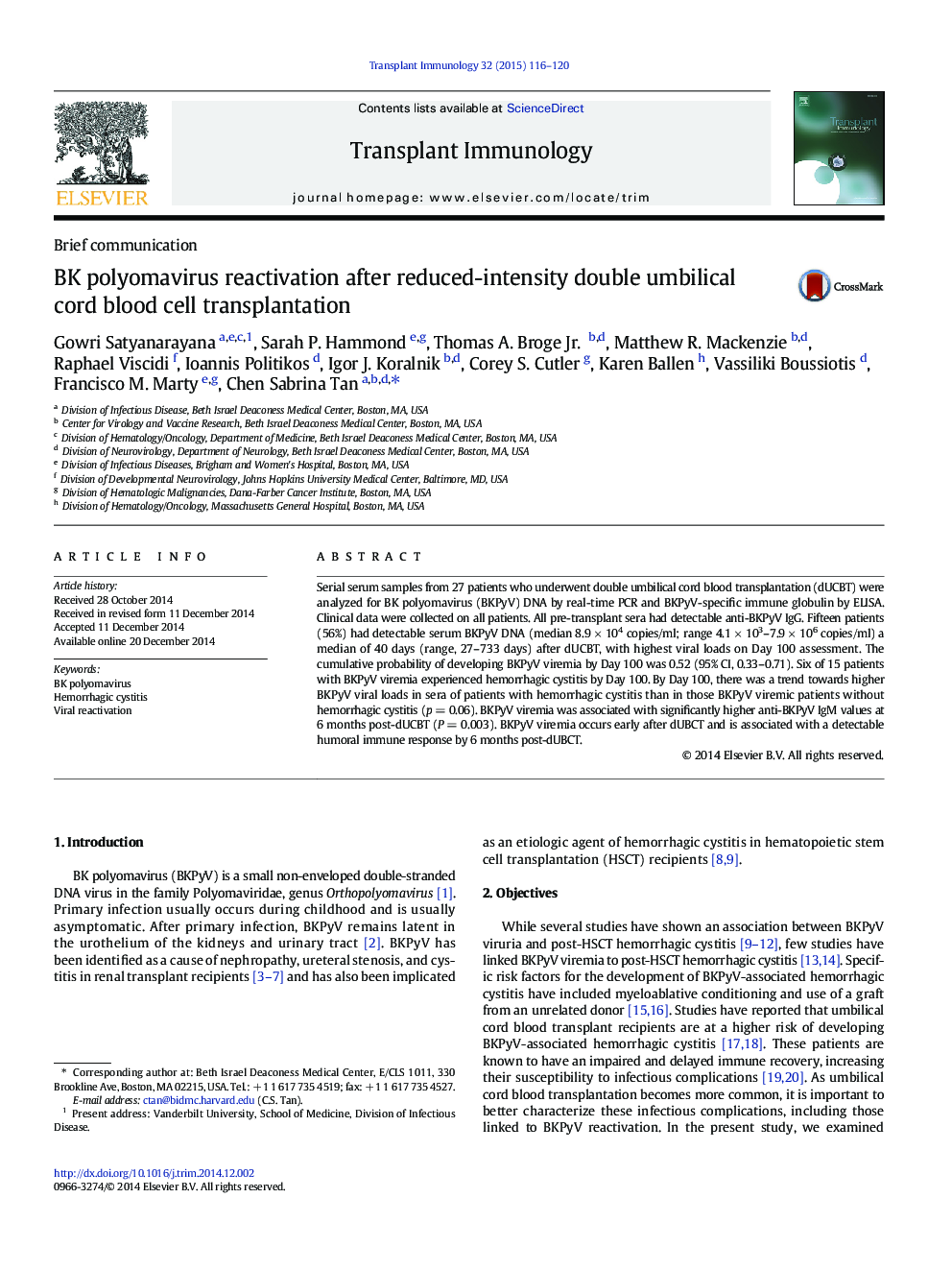| Article ID | Journal | Published Year | Pages | File Type |
|---|---|---|---|---|
| 3392063 | Transplant Immunology | 2015 | 5 Pages |
•BK polyomavirus reactivation occurred in 56% of patients in this cohort.•BK polyomavirus reactivation peaked by Day 100 after HCT.•At 6 months after HCT, anti-BKPyV IgM was higher in those patients who had BKPyV viremia.
Serial serum samples from 27 patients who underwent double umbilical cord blood transplantation (dUCBT) were analyzed for BK polyomavirus (BKPyV) DNA by real-time PCR and BKPyV-specific immune globulin by ELISA. Clinical data were collected on all patients. All pre-transplant sera had detectable anti-BKPyV IgG. Fifteen patients (56%) had detectable serum BKPyV DNA (median 8.9 × 104 copies/ml; range 4.1 × 103–7.9 × 106 copies/ml) a median of 40 days (range, 27–733 days) after dUCBT, with highest viral loads on Day 100 assessment. The cumulative probability of developing BKPyV viremia by Day 100 was 0.52 (95% CI, 0.33–0.71). Six of 15 patients with BKPyV viremia experienced hemorrhagic cystitis by Day 100. By Day 100, there was a trend towards higher BKPyV viral loads in sera of patients with hemorrhagic cystitis than in those BKPyV viremic patients without hemorrhagic cystitis (p = 0.06). BKPyV viremia was associated with significantly higher anti-BKPyV IgM values at 6 months post-dUCBT (P = 0.003). BKPyV viremia occurs early after dUBCT and is associated with a detectable humoral immune response by 6 months post-dUBCT.
